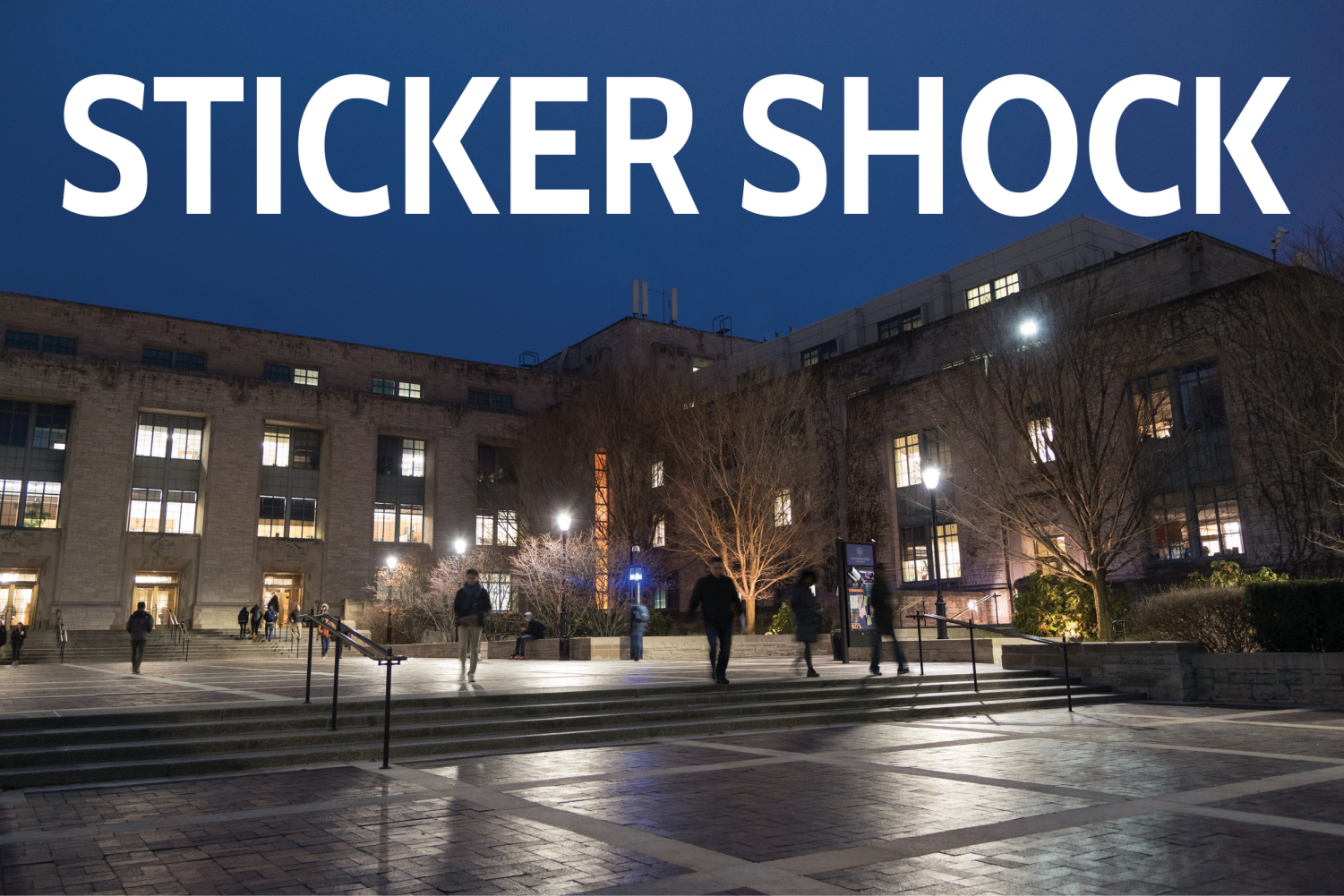In Focus: New University initiative aims to alleviate costs of materials for low-income freshmen in STEM courses
November 17, 2017
When most people feel like spoiling themselves, they indulge in decadent meals or go on shopping sprees. Communication freshman Carter Liebman treated himself to a Northwestern education.
“My being nice to myself and spending money on myself was coming here,” he said. “And ultimately, that’s what was worth it for me.”
Liebman, a theater and neuroscience double major, is one of many Pell Grant-eligible freshmen interested in a science, technology, engineering and mathematics career.
While the University has taken strides to diversify its student body, low-income and first-generation students find resources are lacking when they get to campus, said Madisen Hursey, vice president of Northwestern Quest Scholars Network.
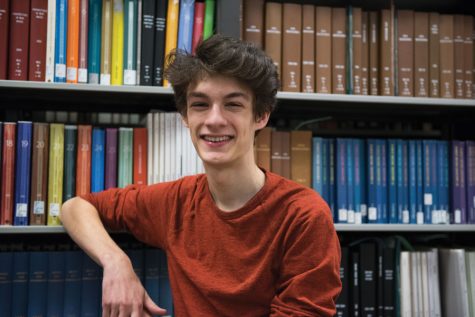
Carter Liebman
Hursey said she has seen students trade spending money on food or socializing to buy books.
“Many students will sacrifice that social mobility to have their textbooks,” the Weinberg junior said. “Some students do feel stuck in that position between, ‘Do I get the Northwestern experience that feels social to me, or do I buy a textbook?’”
Though all NU students face course costs, those in STEM classes often have higher textbook prices in addition to extra expenses for class-specific materials, said Student Enrichment Services director Kourtney Cockrell.
To address this issue and make NU more inclusive, the University launched a pilot initiative at the beginning of Fall Quarter that allows eligible freshmen taking STEM courses to borrow their books and course materials for free. However, low-income STEM students said the initiative only does so much to mitigate their challenges.
“It’s so important to create a university that’s diverse,” Liebman said. “Socioeconomically, racially, every other prospective diversity, but then what are you doing to keep us here?”
Choosing STEM
The pilot focused on low-income freshmen taking STEM courses because the number of Pell Grant recipients who intend to major in quantitative sciences is “disproportionately high” compared to the general population, said Mary Finn, associate dean for undergraduate academic affairs.
In a typical class of freshmen, about 60 percent of Pell Grant recipients pursue STEM degrees compared to about 40 percent of non-Pell Grant students, Michael Mills, associate provost for University enrollment, told The Daily in an email.
 Weinberg sophomore Brandon Scott, who is majoring in neuroscience with an allied field in human behavior and cognition, said he saw a STEM education as a way to “escape” the life he was living and make things better for him and his mother.
Weinberg sophomore Brandon Scott, who is majoring in neuroscience with an allied field in human behavior and cognition, said he saw a STEM education as a way to “escape” the life he was living and make things better for him and his mother.
“STEM is the easiest field to point at and say that’s where the money is,” said Scott, a Pell Grant recipient. “You see a career that is mostly lucrative and, in a way, can bring you out of the situation you already are in. For a lot of kids, coming in here and being a doctor was like the only way out.”
Scott said he hopes to use his degree to help children with learning disabilities and people with degenerative mental diseases like dementia.
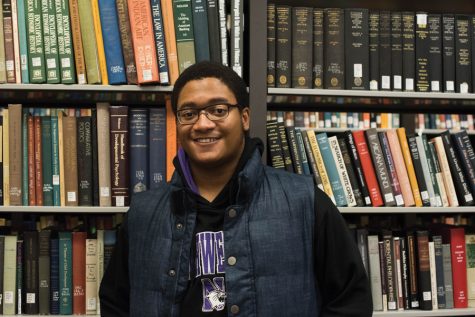
Brandon Scott
Weinberg junior Marissa Mullen, also a Pell Grant recipient, said first-generation, low-income students are often concerned with financially supporting their families after graduation.
Mullen, who has wanted to be a doctor since she was in kindergarten, said she is still sometimes conflicted about going into medicine because of the time and expenses associated with additional years of schooling.
“I reason with it in my head, like, ‘If you become a doctor, you will really be able to support your family,’” she said. “But part of me is like, ‘Is there an easier or faster route, and is this maybe a selfish endeavor?’”
Scott said difficult courses coupled with the high price of required class materials could cause low-income students to drop their STEM majors.
“You start realizing materials cost money, all these programs that you need to pass cost money,” he said. “You start realizing knowledge isn’t as important as money is right now.”
Finding the “cheapest way”
Many low-income students have to jump through hoops to find affordable course materials.
Instead of going out or meeting new people in her hall freshman year, McCormick fifth-year Yakira Mirabito said she and her friends spent more than a day holed up in a dorm room searching online for inexpensive textbooks.
Mirabito, co-president of Quest, said she used “a lot of janky ways” to find materials. She would buy the international versions of textbooks, or spend hours in the library photocopying a solutions manual, she said.
In addition to textbooks that could cost hundreds of dollars, Cockrell said STEM students also need additional materials like lab coats, goggles, software, clickers and online homework licenses.
“Many first-year students spend their first week on this couch in tears because they’re so overwhelmed about how they’re going to afford their books,” she said.
Mullen said she came into her first quarter knowing she had to find the “cheapest way” to procure her textbooks.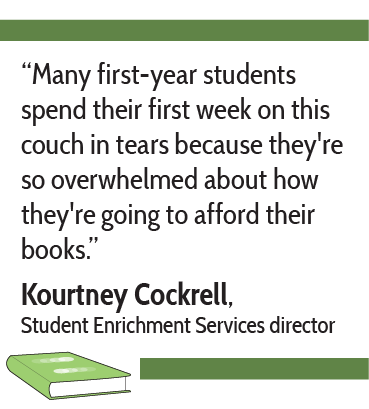
Though she was able to get affordable books through Amazon and Facebook, she said her first day of class presented unexpected expenses.
“I walked into class feeling all good about myself like already finessing the system as a freshman,” she said. “But then I sat down and they were like, ‘And then you need to buy the $70 software online,’ and I was like ‘What the … ?’ So those things sneak up on you.”
Because some students use alternative channels to get materials, they may sacrifice quality, said Mirabito, who used an unofficial version of MATLAB — a software the McCormick School of Engineering now provides for its students.
On occasion, Mirabito said her software would not run programs properly, so she would end up sending them to friends who had the official version.
“Looking for resources is wasting time that could be used academically or socially,” she said. “It meant me and my one friend skipping an event because we were still trying to figure out how the hell we were going to get $300 worth of books in the next like two days.”
Unlike Mirabito and Mullen, Scott said he was “naive” Fall Quarter of freshman year and didn’t know about other ways to get materials, so he bought his books from the University’s bookstore.
Even with price matching, Scott said his books for the quarter cost him about $1,000 and he had to use a significant amount of his savings to afford them.
“The fact that my chump change had to be dug into so much, definitely affected my living style for the quarter,” he said. “I found myself asking my mom for miniature loans.”
A new initiative
In anticipation of buying books and supplies, Liebman said he transferred “several thousand dollars” into his checking account.
“I knew exactly what was going to happen,” he said. “I was going to land on campus, I was going to be OK for a week and then I was going to have to buy several hundred dollars worth of textbooks.”
However, one week before Fall Quarter classes began, Liebman, along with about 350 other freshmen, received an email from Mills informing them of their eligibility for the Books for Cats initiative.
The initiative — a collaboration across University offices and departments that is funded by the Office of the Provost — allows eligible students taking STEM courses to borrow free textbooks and supplies for those classes from the Norris Bookstore, said Lee West, director of undergraduate education. Students enrolled in chemistry can also rent free lab coats, goggles and LabArchives from the chemistry department through the initiative, West said.
Materials are available for 14 courses, including chemistry, math, economics, engineering, statistics and design, according to Mills’ email to students.
Associate provost for undergraduate education Ron Braeutigam said administrators implemented the initiative because students were starting their classes without books.
“If you don’t have your books then you’re immediately a little bit behind the 8-ball, so we started looking at ways of trying to get the textbooks in their hands,” Braeutigam said.
More than 130 students obtained supplies from the bookstore and the chemistry department, West said.
Cockrell said the initiative reflects the University’s “obligation” to low-income students.
“We knew for the past three years that financial accessibility around books and supplies was probably the number one barrier that students were facing,” she said. “This was just one way to alleviate just one of several barriers in order to ensure students are successful and thrive, versus survive.”
Provost Jonathan Holloway, who authorized the program, said participating students on average spent $470 less on books and supplies.
Liebman said he was able to get all the materials he needed for chemistry — a textbook, lab coat, goggles and clicker as well as homework, clicker and lab software licenses — through Books for Cats.
Steve Hannen, assistant store manager of the Norris Bookstore, said Books for Cats differs from the traditional rental system because students are allowed to keep their books as long as they need them for a class, rather than having to return them at the end of the quarter.

Yakira Mirabito
“We had a lot of students that were really excited this opportunity was being given to them,” he said. “Just seeing the looks on all the students’ faces when they came in and everything was taken care of, ready to go.”
He added it was “very satisfying” for him and his team to see the stress and anxiety normally associated with buying books lifted off students’ shoulders.
The initiative changes the first-year experience for low-income STEM students, Mirabito said.
“It allows students to enjoy their first year,” she said. “College is about learning and also about the community you build. It’s not about trying to scrape every nickel and dime from relatives, your bank accounts, savings (and) trying to get jobs.”
The money students would be spending on books can now be used toward anything from club dues to having a dinner with friends, Mirabito said.
As the initiative is in its pilot phase, sophomores, juniors and seniors — as well as students taking non-STEM courses — are currently not eligible to participate.
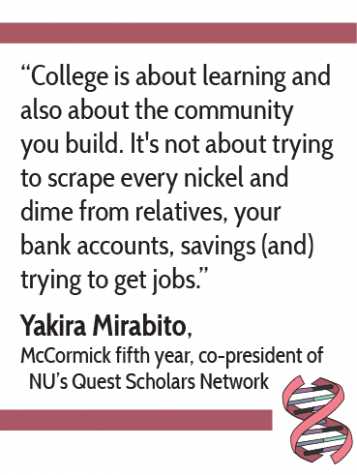 A pilot was necessary to gauge how students would respond and what the University’s cost would be, Holloway said.
A pilot was necessary to gauge how students would respond and what the University’s cost would be, Holloway said.
Holloway added he hopes Books for Cats can reduce the number of students who exit STEM. Students should be able to decide whether they have a passion for STEM on a level playing field, he said.
“A high number come in thinking they’re going to major in a STEM field, heading off to a career in medicine,” he said. “That’s sort of a traditional kind of track of ambition. We also know that a higher than we consider acceptable number of students … melt away. They walk away from the STEM classes.”
Weinberg freshman Chloe Wong, who borrowed her course materials from Books for Cats, said she came to NU intending to study biology and become a doctor. However, she switched to the pre-health track after deciding she did not like chemistry.
Wong said if she had paid for everything she needed to take chemistry, the amount for the class would have been “80 percent” what she spent on books and supplies this quarter.
“(The materials) allow me to be on the same level again and be able to have the same opportunities and not be deterred because ‘Oh you don’t have money for this, you can’t do it,'” she said.
Existing efforts
Administrators have discussed ways to reduce barriers for low-income and first-generation students for years, said Lane Fenrich, assistant dean for first-year students and transition programs.
Even before the University committed to increasing the enrollment of low-income students, Fenrich said the Weinberg College of Arts and Sciences was already implementing transition programs to improve students’ chances of success at NU.
For Mullen, being able to participate in the NU Bioscientist program “changed the scope” of her undergraduate experience. The program runs from fall through winter and prepares students to do research. Participating students are also able to continue working on individual research projects during the summer between their freshman and sophomore years.
“I don’t think as a first-gen, low-income student, I would’ve even really had my mind on those things yet because I was still adjusting to college,” Mullen said. “Having that help finding a lab, getting ready to work in a lab was really huge because I don’t have that kind of background.”
The NU Bioscientist program is just one of various programs Weinberg offers to incoming students, Fenrich said. Summer transition programs such as BioEXCEL, ChemEXCEL and Bridge are also meant to help students prepare for courses in their chosen field of study.
Fenrich added that even before Books for Cats, Weinberg’s transition programs have loaned textbooks to participating students who continue with the subjects during the academic year.
Additionally, Finn said loaning free lab materials began in Weinberg as the chemistry department started providing supplies to students — based on a list from SES — before the formal initiative was launched this quarter.
Other University offices, including the Searle Center for Advancing Learning and Teaching, are also working to improve existing programs to better support students.
This year, the Academic Mentoring Program and the Gateway Science Workshop were consolidated into a single peer tutoring service called Peer-Guided Study Groups, said Marina Micari, the center’s director of academic support and enrichment.
Last year, on average about 30 percent of registrations in course-specific academic programs were from Pell Grant recipients, Micari said in an email. Students registered by either signing up for a group or coming to drop-in sessions, she said.
“There’s an increasing awareness certainly about the needs of low-income students, first-generation students, really any student who finds themselves struggling in any way,” Micari told The Daily. “We want to try to prevent that as much as we can. If not prevent it, help a student who’s in that situation.”
Micari said Peer-Guided Study Groups focus on STEM courses not only because the material is challenging, but also due to the fact that large lecture classes can feel “anonymous and impersonal.”
Through his AMP and GSW groups, Scott said he was able to find the support networks necessary to “survive” introductory STEM classes.
“I’m not the type of person who can go it alone,” he said. “That’s just not who I am. I work best in communities.”
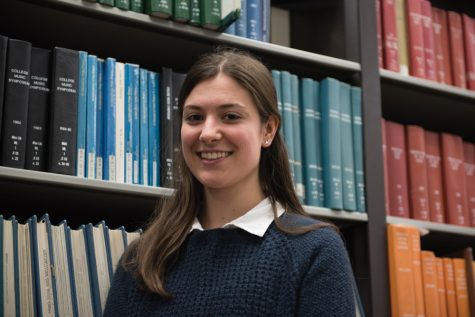
Marissa Mullen
He added that it was very helpful to learn from peers because they would explain things from the perspective of a student who had done well in the course rather than a professor.
Mullen, who has also participated in GSW, said it was reassuring to know free tutoring was available to her.
“It’s a really nice kind of buffer for low-income, first-gen students to feel like if they need additional resources there are things that won’t break the bank for them,” Mullen said.
In a continued effort to make services accessible for students, Micari said the center is collaborating with Weinberg to create a hub for tutoring resources, which will be located in Main Library and available in January.
The goal is to create a space that students can easily find and utilize, she said.
“We want to help students who maybe haven’t had that kind of experience understand that … going to get help is not a sign of weakness,” she said. “It’s actually a sign of strength and something that we all should be doing.”
A temporary fix
Though Liebman said he would have been “far less financially stable” this quarter without the free materials, he added that the pilot’s current limitations are “scary.”
“I feel like this is pushing off a problem that I know I’m going to have to face financially anyway,” he said. “Yes I didn’t have to pay for textbooks this quarter, I might not even have to pay for textbooks next quarter or Spring Quarter, but after that? … It does scare me a little bit knowing that there isn’t a system yet for me next year.”
Administrators said the initiative is a temporary fix, and Braeutigam added that assessments will determine if and how the pilot will expand.
“The University does have money to help people and we can do almost anything we want to do, but we can’t do everything,” he said. “So it’s a question of trying to figure out — and this is what assessment’s all about — where we get the biggest ability to help students succeed.”
Expanding Books for Cats could mean extending eligibility to sophomores, juniors and seniors as well as increasing the number of available courses, Finn said.
Administrators said they are looking into how Books for Cats could broaden to cover other courses with high costs.
“We have to identify where else should we be providing the support in the curriculum and that’s something we’re working on now,” Finn said. “We know there are high costs in art theory and practice. We know there are high costs in the foreign languages.”
Hursey, the Quest vice president, said expanding the initiative to include upperclassmen is crucial because they not only have to worry about affording textbooks, but also need to think about costs associated with living off campus or paying for exams like the LSAT or MCAT.
When assessing the initiative, Mirabito said administrators should keep in mind that giving a student a textbook won’t “magically” guarantee their success in a course. She said it is important for the University to consider other factors that could impact a student’s performance, like whether they are first-generation or if they came from an underserved high school.
“If they don’t consider (expansion), they’re failing us,” Mirabito said. “Anything that’s done, if it’s done well and works, should be expanded.”
Building momentum
Though various initiatives and efforts to improve the experiences of low-income students have only been launched this year, administrators said increasing accessibility has been a continued focus.
In 2016, University President Morton Schapiro announced several initiatives that would improve NU’s ability to support students financially. The changes included awarding aid packages without loans, placing a $20,000 cap on need-based loans for current students, providing University-funded scholarships for undocumented students and increasing aid for international students.
Mullen said financial aid was the only reason she was able to afford NU.
“I am very grateful to be at a school that’s like ‘Here’s a place that … someone like you with your background couldn’t go to and we’re going to make it affordable for you,’” she said.
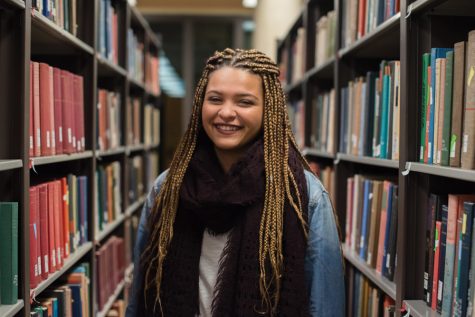
Madisen Hursey
Braeutigam said administrators involved in Books for Cats were conscientious of financial aid regulations when creating the initiative.
Books for Cats would not have been possible without campus-wide collaboration, West said, as it required contributions from Weinberg administrators, SES, the chemistry department, Norris Bookstore, the Office of Financial Aid, the Office of the Registrar and the Office of the Provost.
Conversations surrounding the initiative have opened the door to discussions that branch out beyond just wanting to get materials in the hands of students, Fenrich said. Administrators are now thinking about how classes are taught and what materials are necessary, he said.
Even though the pilot is a “Band-Aid solution,” Cockrell said its implementation raises awareness of larger issues surrounding how the experiences of low-income students can be improved.
“They gained a lot of attention and that’s going to help us to really build momentum for future policy change,” she said.
In addition to seeing the initiative expand, students said they hope improvements will be made to the SES office, such as adding more staffers or moving the office to a larger, more visible location.
But Hursey said she is concerned that an expansion of SES could increase the expectation placed on Cockrell and her staff to solve every problem low-income students face.
If the University wants to ensure students from all backgrounds feel welcome on campus, initiatives must extend beyond the efforts of SES and individual departments, Hursey said.
“If you zoom out and look at the University as a whole you’ll find a lot of gaps that need to be filled,” she said. “I’m not sure I feel confident about administrative offices outside of SES that are working toward that end goal, which is why I’m inclined to say the University could be doing much better.”
Cockrell said Books for Cats is a “really powerful” initiative because it did not happen just out of the SES office. Often, she said, “diversity offices” can become a “dumping ground” where anything related to a marginalized group is expected to be handled by an individual office.
The pilot is indicative of a “systems change” as opposed to work done at the office level, Cockrell said.
Initiatives like Books for Cats make students feel wanted and valued by the University, said Scott, the Weinberg sophomore.
However, many students were unaware of the Provost’s Office’s involvement in the implementation of the pilot. Hursey said it is crucial for students to know high-level University administrators are aware of their needs.
“That is going to make them feel like institutionally Northwestern cares about them, which is a much bigger deal than saying the chem department cares about them,” Hursey said.
Cockrell said the short time administrators had to alert students about Books for Cats may be a reason why students were not aware of which offices were involved. However, if the initiative does expand, she said there would be time to “appropriately and properly” roll it out.

Chloe Wong
Other administrators agreed that one issue with implementation was the quick turnaround, as the initiative was authorized the Friday before the email was sent to students.
Schapiro said it is the University’s job to create these initiatives and that it “doesn’t matter who gets the credit” as long as something “right” is done. He added that although he is pleased with the effort, he wishes it could have been launched sooner.
“Every time I hear one of these innovations, my reaction frankly isn’t, ‘Oh, good for us,’ it’s like, ‘It’s about time, to be honest’,” Schapiro said.
Working toward inclusion
As the University continues diversifying incoming classes, students said there have to be more programs in place that make them feel comfortable.
Wong, the Weinberg freshman, said without Books for Cats and other initiatives, prospective students who are low-income may be too “intimidated” by NU’s cost to apply.
“By having these initiatives, you’re being more inclusive and you’re enabling people from all types of backgrounds … to come and contribute to the University and make something of themselves,” she said.
Despite the current resources, students said administrators could still do more.
Though the attractions for low-income STEM students are appealing, Liebman said the University must work on continuing support.
“Northwestern is enriched, Northwestern is helped and at the end of the day Northwestern is better because we have low-income students here,” Liebman said. “If you aren’t taking every single person into account, and you aren’t taking every single aspect of humanity into account, you’re not doing your job as a university.”
Email: [email protected]
Twitter: @_allysonchiu

